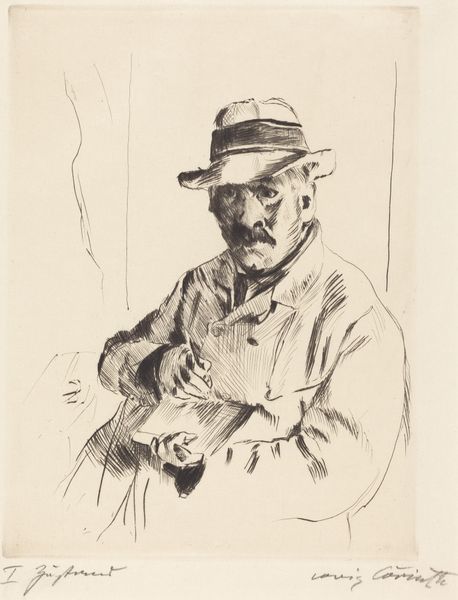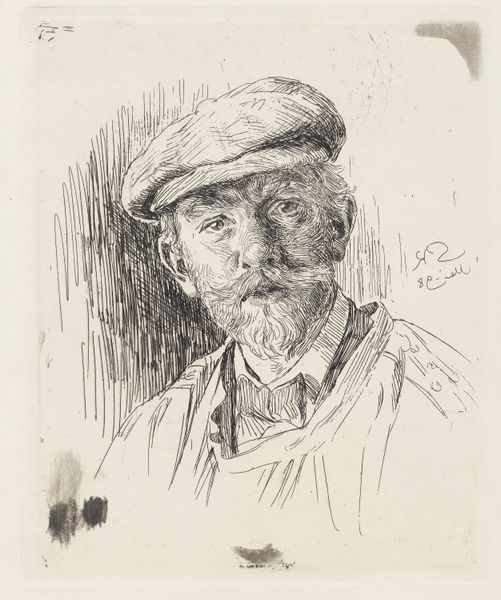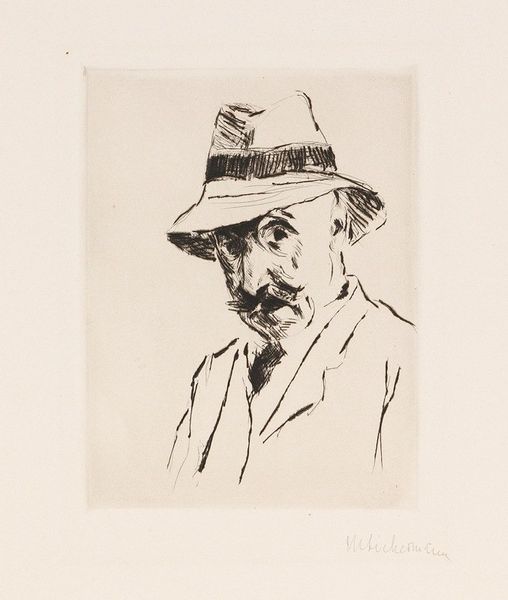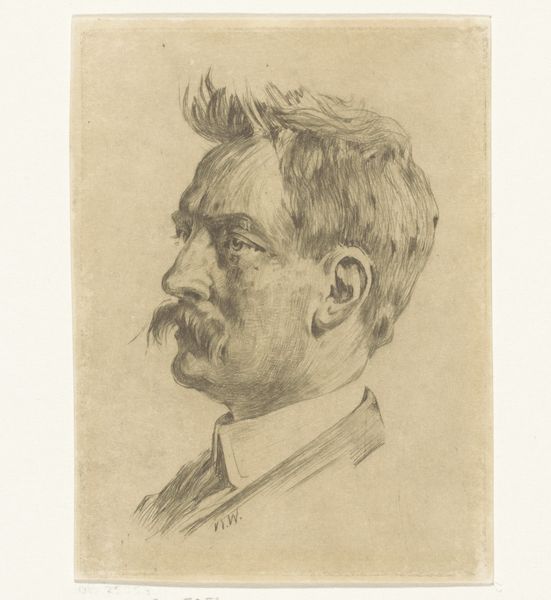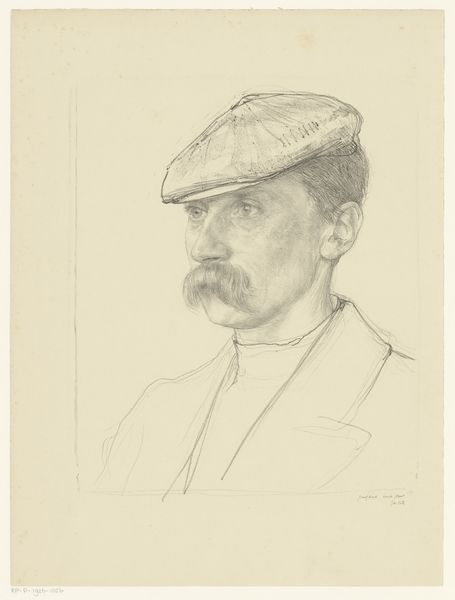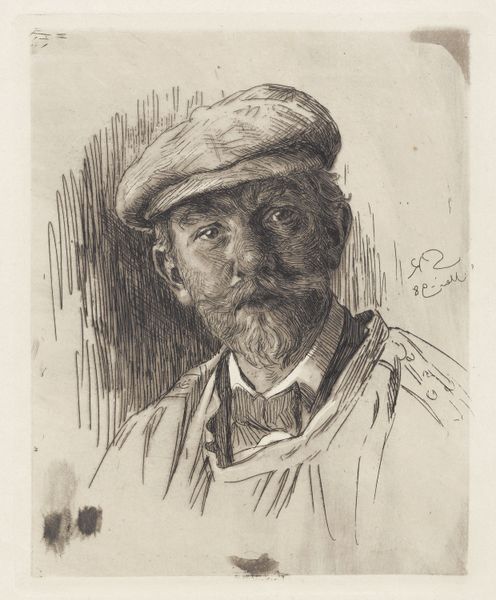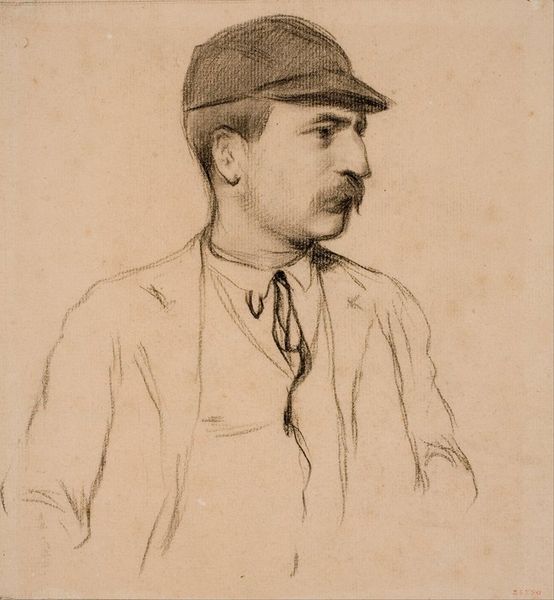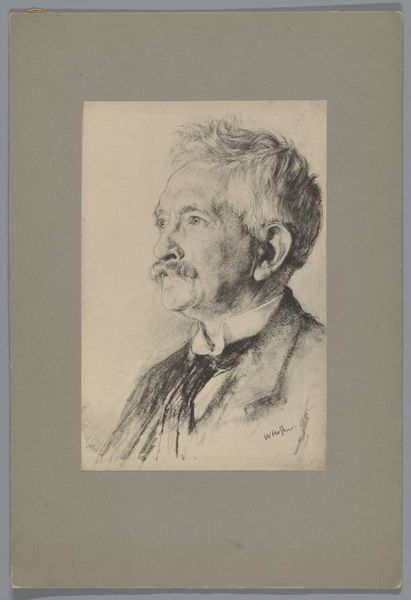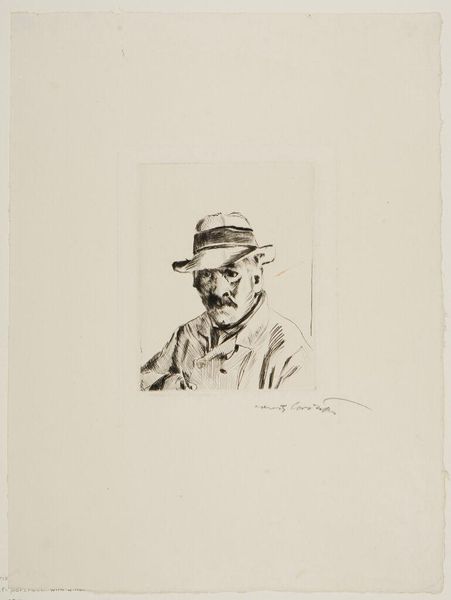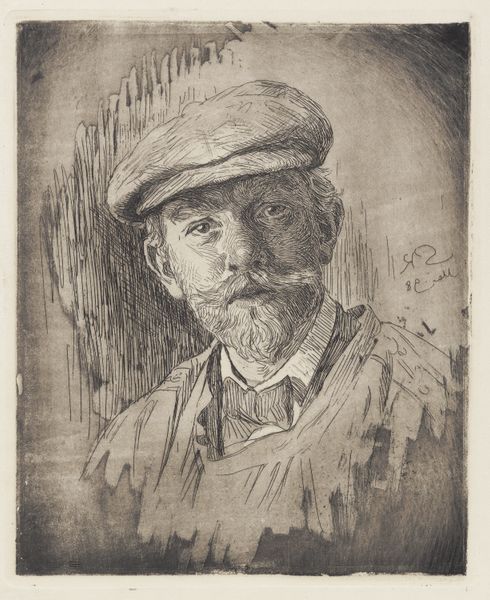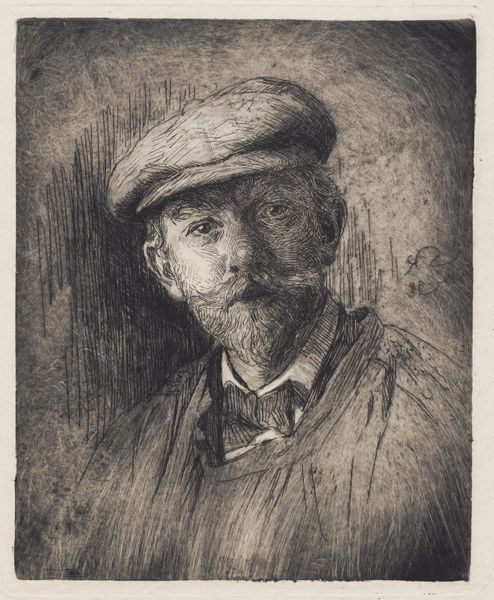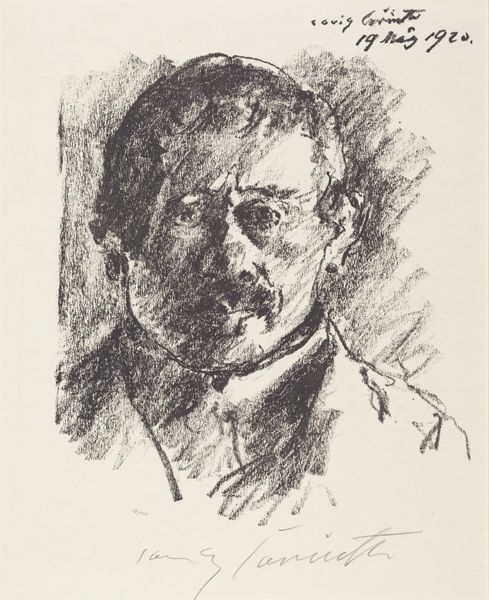
print, etching
#
portrait
#
self-portrait
# print
#
etching
#
expressionism
#
monochrome
Dimensions: plate: 15 x 11.5 cm (5 7/8 x 4 1/2 in.) sheet: 42.6 x 30.1 cm (16 3/4 x 11 7/8 in.)
Copyright: National Gallery of Art: CC0 1.0
Curator: Before us is Lovis Corinth’s "Self-Portrait in a Straw Hat," an etching dating from 1913. Editor: Well, hello there, Mister Straw Hat! He’s got quite the stare, doesn’t he? It’s that no-nonsense, 'I’ve seen things' kind of gaze. And look at those lines digging into his face – the guy looks like he's lived a thousand years in this tiny monochrome world. Curator: The print medium allows for a remarkable level of detail and texture, wouldn't you agree? Consider the hatch marks defining the folds in his coat and the weave of his hat; it's all about the manipulation of the material. These choices evoke the social realities of artists, navigating a landscape of patronage and production. Editor: Right, right, the material realities... but those shadows are telling a story too! There’s something about how he’s cast himself in light and darkness—feels like he’s wrestling with himself, maybe even having a row with his own identity, a secret duel. Curator: You read the image through a lens of emotional introspection. I find it compelling to interpret Corinth’s decision to use etching as a reflection of the accessibility of printmaking during the period; its relative affordability increased its consumption among a wider audience, moving images through society... Editor: Mmm, moving through society…like a whispered rumour. I think Corinth understood how to capture something deeply personal and project it outwards. He has these tiny parallel lines that almost seem like scars on his face. He doesn't seem afraid of aging. He's confronting us with something. Curator: Exactly! His work challenges the boundaries between high art and accessible media. These self-portraits, reproduced as prints, circulated widely, challenging the myth of the artist as solely an inspired genius and implicating artistic labor in wider systems of consumption. Editor: You've framed that well, bringing the external pressures into focus. But for me, it boils down to the emotional vulnerability Corinth bares with this level of artistic skill, an expression that feels startlingly familiar, as fresh and poignant today as I imagine it felt then. Curator: It certainly is thought-provoking how an artwork of this type continues to spark very divergent conversations. Editor: Absolutely. It leaves one with a lot to mull over about representation, skill and personal experience.
Comments
No comments
Be the first to comment and join the conversation on the ultimate creative platform.
